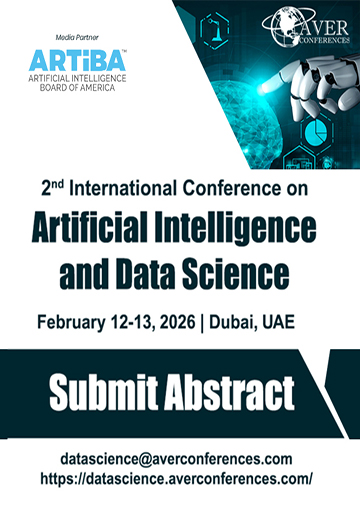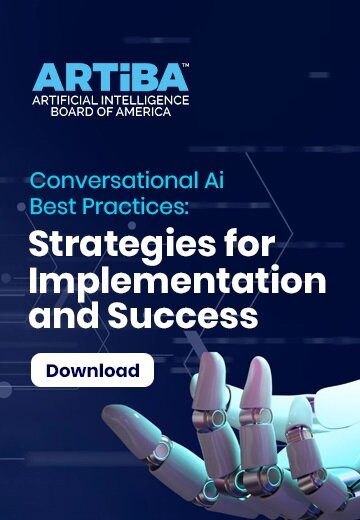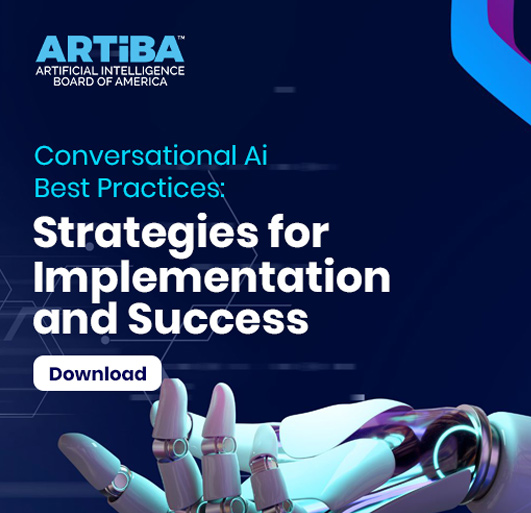AI Engineer vs. ML Engineer: Roles, Skills, and Career Paths
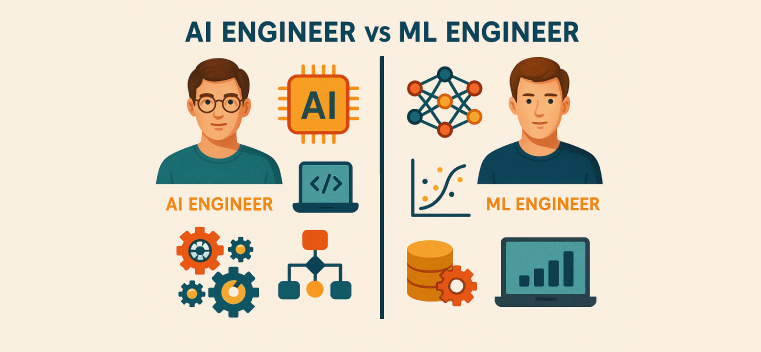
Artificial intelligence (AI) is transforming the world, powering everything from chatbots to self-driving cars. Within this field, two roles stand out: AI engineers and machine learning (ML) engineers. While both work with intelligent systems, their responsibilities, skills, and focus areas differ, creating unique AI vs. ML career paths. Understanding these differences is crucial whether you’re a business hiring talent or someone exploring AI and ML roles to kickstart a tech career.
In this article, we’ll break down the AI engineer vs. ML engineer debate, covering their roles, skills, tools, education, and real-world applications. We’ll also explore how these roles overlap, key differences, and tips for choosing the right expert for your project. By the end, you’ll have a clear picture of these AI and ML roles and how they shape the future of technology. Let’s dive in!
What Are AI and Machine Learning?
Before comparing AI engineer vs. ML engineer, let’s clarify the basics. AI is a broad field that enables machines to mimic human intelligence, like understanding language or recognizing images. It includes techniques like rule-based systems, computer vision, and natural language processing (NLP). Machine learning, a subset of AI, focuses on systems that learn from data without being explicitly programmed. For example, ML powers Netflix’s recommendation system by analyzing viewing patterns.
AI engineers build systems that combine various AI techniques to solve complex problems, like designing a chatbot that understands customer queries. ML engineers specialize in creating models that learn from data, such as predicting customer churn for a telecom company. Both roles are critical in the data science process, but their scopes and approaches differ significantly in AI vs. ML career paths.
The Role of an AI Engineer
AI engineers design, develop, and deploy systems that mimic human intelligence across industries. Their work goes beyond coding to include hardware integration, creative problem-solving, and aligning solutions with business goals. Think of them as architects of intelligent systems, building everything from autonomous robots to fraud detection tools.
Responsibilities of an AI Engineer
AI engineers handle a wide range of tasks in their data science workflow:
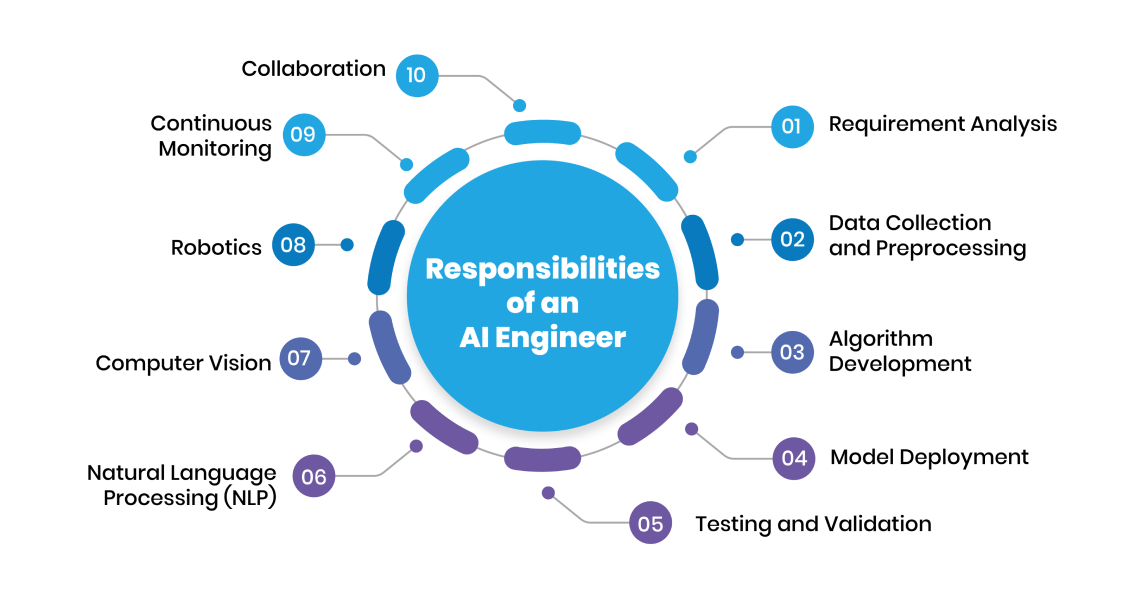
-
Requirement Analysis: Understand project goals and stakeholder needs, like designing an AI system to automate customer support.
-
Data Collection and Preprocessing: Gather and clean data to ensure accuracy, such as preparing sensor data for a self-driving car.
-
Algorithm Development: Create algorithms for tasks like image recognition in medical diagnostics.
-
Model Deployment: Integrate AI models into applications, like embedding a chatbot in a website.
-
Testing and Validation: Ensure systems work correctly, such as testing a robot’s ability to navigate obstacles.
-
Natural Language Processing (NLP): Build systems like Siri that understand and respond to human speech.
-
Computer Vision: Develop tools to interpret visual data, like facial recognition for security systems.
-
Robotics: Design AI-powered robots for manufacturing or healthcare.
-
Continuous Monitoring: Maintain system performance, updating models as new data arrives.
-
Collaboration: Work with business teams to align AI solutions with company goals, ensuring ethical and cost-effective outcomes.
For example, an AI engineer at a hospital might develop a system combining NLP and computer vision to analyze patient records and medical images, improving diagnosis speed.
Skills and Tools
AI engineers need a diverse skill set to tackle their broad responsibilities in AI and ML roles:
-
Programming: Proficiency in Python, Java, C++, and R for building scalable systems.
-
AI Frameworks: Expertise in TensorFlow, PyTorch, and OpenCV for model development.
-
Deep Learning: Knowledge of neural networks for tasks like speech recognition.
-
Mathematics and Statistics: Strong foundation in linear algebra and probability to design accurate algorithms.
-
Hardware Knowledge: Familiarity with GPUs, FPGAs, or neuromorphic chips for optimizing performance.
-
MLOps and DevOps: Skills in CI/CD pipelines and Docker for deploying models.
-
Domain Expertise: Specialization in fields like robotics or NLP, using tools like spaCy or ROS (Robot Operating System).
-
AI Ethics: Understanding ethical implications, like ensuring facial recognition systems avoid bias.
-
Cloud Computing: Experience with AWS, Azure, or Google Cloud for scalable deployment.
For instance, an AI engineer building a self-driving car might use Python and TensorFlow to develop vision models, Docker for deployment, and GPUs for faster training.
Education and Certifications
AI engineers typically have:
-
Bachelor’s Degree: In computer science, mathematics, or data science.
-
Master’s or PhD: In AI, machine learning, or robotics for advanced roles.
-
Certifications: Professional certifications in AI, machine learning, or related fields from reputable providers can enhance skills and credibility.
Practical experience through internships or projects, like building a chatbot, is also valuable.
Real-World Applications
AI engineers work on transformative projects:
-
Chatbots: Automating customer service for e-commerce platforms.
-
Autonomous Vehicles: Enabling cars to navigate using sensor data.
-
Fraud Detection: Scanning transactions in real-time for banks.
-
Medical Devices: Creating AI-powered tools for faster diagnoses.
These projects highlight the broad scope of AI vs. ML career paths, where AI engineers tackle interdisciplinary challenges.
The Role of a Machine Learning Engineer
ML engineers focus on building, optimizing, and deploying models that learn from data to make predictions or decisions. They are data experts, transforming raw information into actionable insights for businesses. Think of them as specialists who fine-tune the “brain” of AI systems.
Responsibilities of an ML Engineer
ML engineers have a data-centric data science workflow:
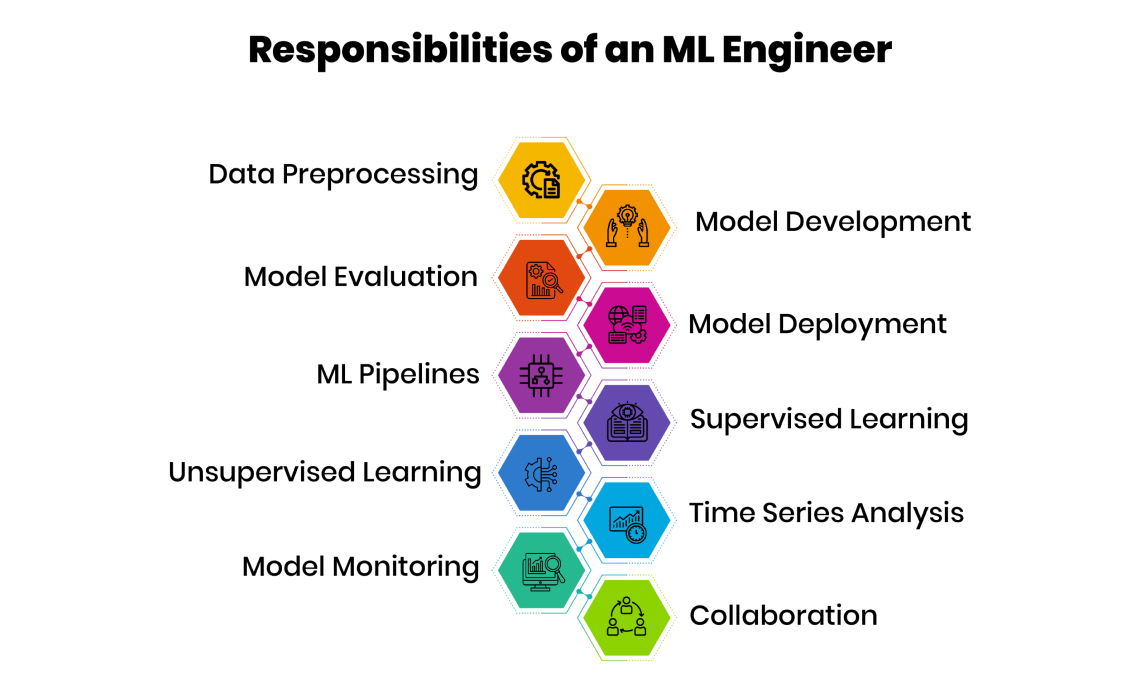
-
Data Preprocessing: Clean and structure data, like removing outliers from sales records.
-
Model Development: Build models using algorithms like decision trees or neural networks.
-
Model Evaluation: Assess performance with metrics like accuracy or F1-score.
-
Feature Engineering: Create data attributes, like extracting purchase frequency for churn prediction.
-
Model Deployment: Integrate models into apps, like a recommendation system for Spotify.
-
ML Pipelines: Automate workflows to retrain models with new data.
-
Supervised Learning: Train models with labeled data, like classifying emails as spam.
-
Unsupervised Learning: Find patterns in unlabeled data, like customer segmentation.
-
Time Series Analysis: Predict trends, like stock prices based on historical data.
-
Model Monitoring: Track performance to address issues like data drift.
-
Collaboration: Work with data scientists and analysts to align models with business needs.
For example, an ML engineer at Netflix might develop a recommendation model that learns from user viewing habits, improving suggestions over time.
Skills and Tools
ML engineers need specialized skills for their data-driven role in AI and ML roles:
-
Programming: Mastery of Python, R, Java, and C++ for model development.
-
ML Frameworks: Proficiency in TensorFlow, PyTorch, Scikit-learn, and Keras.
-
Mathematics and Statistics: Expertise in probability, regression, and optimization.
-
Data Preprocessing: Skills in cleaning and feature engineering using Pandas and NumPy.
-
Big Data Tools: Experience with Hadoop, Spark, or Kafka for large datasets.
-
Model Evaluation: Knowledge of metrics like precision, recall, and cross-validation.
-
Data Visualization: Ability to use Matplotlib, Seaborn, or Tableau to present insights.
-
Cloud Computing: Familiarity with AWS, Azure, or Google Cloud for scalable pipelines.
-
MLOps: Expertise in MLflow or Databricks for managing model lifecycles.
-
Bias Mitigation: Techniques to ensure fair and transparent models.
For instance, an ML engineer might use Spark to process customer data, Scikit-learn to build a churn model, and MLflow to track experiments.
Education and Certifications
ML engineers typically have:
-
Bachelor’s Degree: In computer science, statistics, or data science.
-
Master’s or PhD: In machine learning or data science for specialized roles.
-
Certifications: Professional certifications in machine learning, data science, or related areas from recognized providers can boost expertise and marketability.
Hands-on projects, like predicting house prices on Kaggle, enhance their expertise.
Real-World Applications
ML engineers power data-driven solutions:
-
Recommendation Systems: Suggesting products on Amazon or Netflix.
-
Fraud Detection: Identifying suspicious transactions for banks.
-
Customer Churn Prediction: Helping telecoms retain users.
-
Healthcare Diagnostics: Detecting diseases from medical data.
These applications show ML engineers’ focus on predictive analytics in AI vs. ML career paths.
Key Differences Between AI and ML Engineers
While AI engineer vs. ML engineer roles share some overlap, their differences are significant. Here’s a breakdown to clarify AI and ML roles:
Scope of Work
-
AI Engineers: Have a broader focus, building end-to-end intelligent systems that may combine ML, NLP, computer vision, or robotics. They work on projects like autonomous vehicles or smart assistants.
-
ML Engineers: Specialize in data-driven models, focusing on prediction, classification, or recommendation tasks, like fraud detection or customer segmentation.
Focus Areas
-
AI Engineers: Emphasize system-level design, integrating AI into applications, and solving interdisciplinary problems, like combining sensors and AI for robotics.
-
ML Engineers: Concentrate on optimizing models, improving accuracy, and managing data pipelines for predictive analytics.
Skill Sets
-
AI Engineers: Need expertise in multiple AI domains (NLP, computer vision, robotics), hardware (GPUs, TPUs), and MLOps for deployment.
-
ML Engineers: Focus on ML algorithms, statistical models, feature engineering, and big data tools like Hadoop or Spark.
Tools and Technologies
-
AI Engineers: Use TensorFlow, PyTorch, OpenCV, and specialized hardware, plus tools like Dialogflow for chatbots or ROS for robotics.
-
ML Engineers: Rely on Scikit-learn, Keras, MLflow, and big data frameworks like Spark or Databricks for model development and scaling.
Depth of Data Science
-
AI Engineers: Understand data science but focus less on data preprocessing compared to ML engineers.
-
ML Engineers: Have deep expertise in data wrangling, feature engineering, and model evaluation, making them data specialists.
Approach to Problem-Solving
-
AI Engineers: Build systems that mimic human intelligence, often requiring creative and interdisciplinary solutions.
-
ML Engineers: Solve data-driven problems by optimizing algorithms and improving model performance.
Applications
-
AI Engineers: Work on autonomous systems, chatbots, or robotics, integrating multiple AI techniques.
-
ML Engineers: Focus on predictive tasks like recommendation systems or risk assessment.
For example, a self-driving car project might need an AI engineer to design the decision-making framework and an ML engineer to optimize object detection models, highlighting their complementary roles in AI vs. ML career paths.
Common Ground Between AI and ML Engineers
Despite their differences, AI and ML roles share significant overlap, making transitions between them feasible:
-
Programming: Both use Python, Java, C++, and R for coding.
-
ML Algorithms: Knowledge of algorithms like decision trees, SVMs, or neural networks is essential for both.
-
Mathematics and Statistics: Linear algebra, calculus, and probability underpin their work.
-
Deep Learning: Both leverage frameworks like TensorFlow and PyTorch for neural networks.
-
Data Preprocessing: Both clean and prepare data, though ML engineers dive deeper.
-
Cloud Computing: AWS, Azure, and Google Cloud are used for deployment.
-
MLOps: Both manage model lifecycles with tools like Docker or MLflow.
-
Big Data Tools: Hadoop and Spark help process large datasets.
-
Frameworks and Libraries: Scikit-learn, XGBoost, and Keras are common tools.
This overlap allows data scientists or software engineers to pivot into either role with additional training, enhancing flexibility in AI vs ML career paths.
Career Paths and Opportunities
Both AI and ML roles offer exciting career paths with high demand and competitive salaries. On Upwork, AI engineers earn around $47–$51 per hour, while ML engineers charge $25–$50 per hour, with salaries often exceeding six figures in tech hubs.
AI Engineer Career Paths
AI engineers can specialize in:
-
Computer Vision Engineer: Building systems for image recognition, like facial recognition for security.
-
NLP Engineer: Developing chatbots or translation tools.
-
Robotics Engineer: Creating AI-powered robots for manufacturing.
-
AI Research Scientist: Innovating new AI techniques in research labs.
-
AI Product Manager: Overseeing AI product development.
-
AI Consultant: Advising businesses on AI adoption.
For example, an AI engineer might start in robotics and later launch a startup for AI-powered medical devices, showcasing the entrepreneurial potential in AI and ML roles.
ML Engineer Career Paths
ML engineers can move into:
-
Data Scientist: Analyzing data for business insights.
-
Data Engineer: Building data pipelines for ML models.
-
Business Intelligence Developer: Creating data-driven reports.
-
Computer Vision Engineer: Specializing in visual data models.
-
NLP Engineer: Focusing on language models.
An ML engineer might transition to a data science role, using their expertise to drive marketing strategies, illustrating the versatility of AI vs. ML career paths.
Choosing the Right Role for Your Project
Deciding between hiring an AI and ML engineer depends on your project’s goals:
-
Hire an AI Engineer if you need:
-
Autonomous systems, like self-driving cars or robots.
-
Broad AI applications, like chatbots or fraud detection systems.
-
Interdisciplinary solutions combining NLP, computer vision, or robotics.
-
Hire an ML Engineer if you need:
-
Predictive models, like recommendation systems or churn prediction.
-
Data-driven optimization, like fraud detection or risk assessment.
-
Expertise in managing large datasets and model pipelines.
For complex projects, like a voice assistant, you might need both: an AI engineer for NLP and decision-making and an ML engineer for speech recognition models. Businesses can find talent on platforms like Upwork, Toptal, or through agencies like Mobilunity or Near, especially in regions like Latin America for cost-effective nearshore hiring.
Challenges and Future Trends
Both AI and ML roles face challenges:
-
High Demand: Talent scarcity drives up costs, pushing companies to offshore or nearshore hiring.
-
Ethical Concerns: Ensuring fairness and transparency in models is critical, especially in sensitive areas like healthcare.
-
Rapid Evolution: Continuous learning is essential to keep up with new tools and techniques.
Future trends include:
-
MLOps Growth: Automating model deployment and monitoring will streamline data science workflows.
-
Hybrid Roles: As boundaries blur, hybrid AI/ML roles may emerge, requiring broader skills.
-
Responsible AI: Focus on ethics and governance will shape both roles.
Conclusion
The AI engineer vs. ML engineer debate highlights two vital roles in the AI revolution. AI engineers build broad, intelligent systems, tackling projects like robotics or chatbots, while ML engineers specialize in data-driven models for predictions and optimization. Both share skills in programming, math, and MLOps, but their focus areas and tools differ, shaping unique AI vs. ML career paths.
As AI and ML evolve, demand for these experts will grow, with opportunities in data science, robotics, and beyond. Start your journey by learning Python, building projects, or hiring talent.





